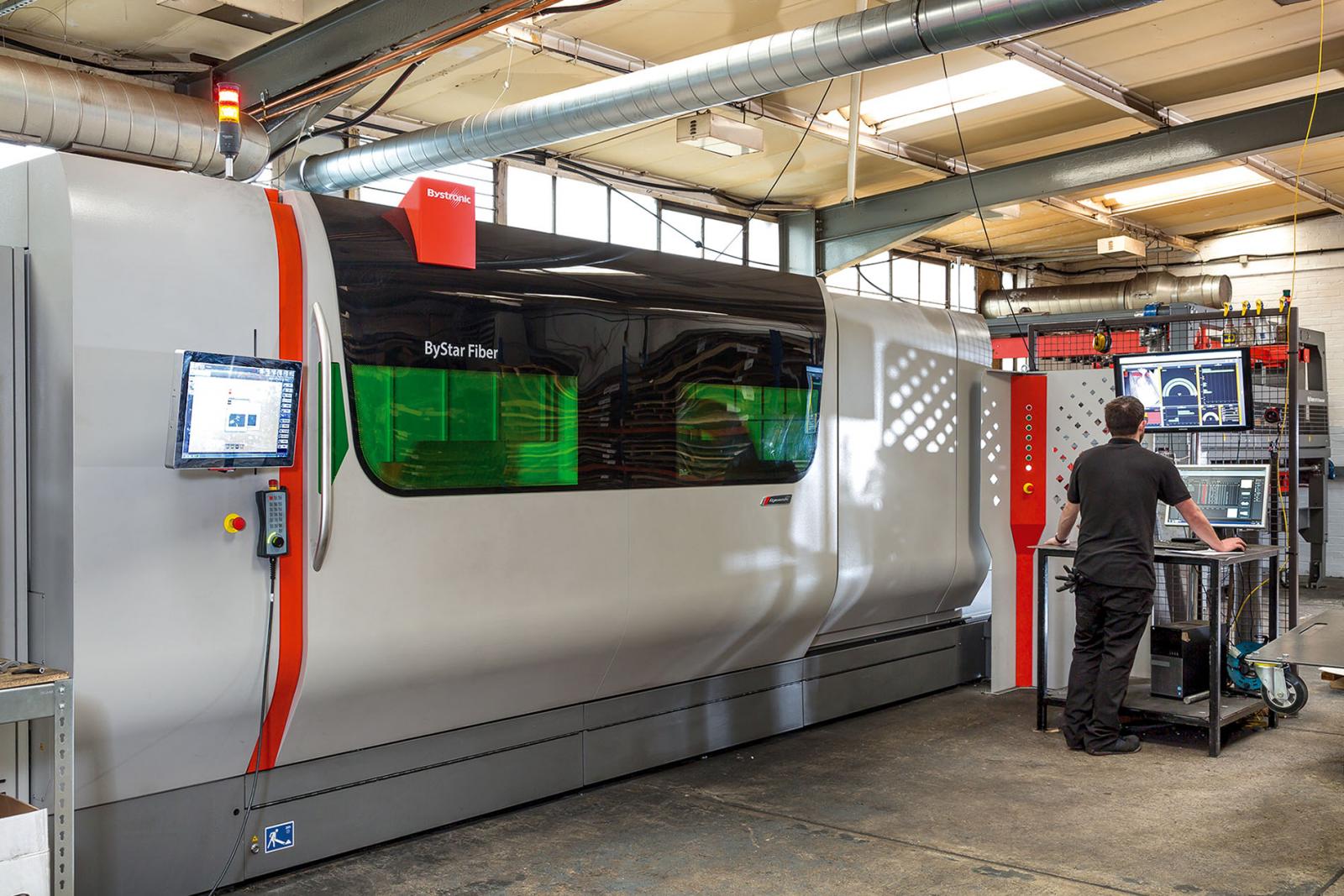
Two 10kW fibre laser production cells at Laser 24 in Essex add up to one of the most powerful sheet metal cutting capabillities in the South of England.
A 10 kW ByStar Fiber to the ByTrans Extended was installed in mid-2018 and was followed by an identical production system six months later.
Director Iain Summerfield said: "The 10 kW fibre laser is twice as fast as our previous fibre machine and over three times more productive than our old CO2 equipment. We now cut 10 mm mild steel sheet at around 5 m/min on the 10 kW machine, whereas on our CO2 machines, the best we could achieve in the same material was 1.5 m/min."
He added that the company mainly uses nitrogen as the assist gas, rather than oxygen, as it results in an unoxidised edge that does not need to be finished before it is painted or powder coated.
A further advantage of having a 10 kW fibre laser source is that there is sufficient power to effectively use air rather than oxygen as the assist gas for certain jobs. It results in an edge quality indistinguishable from if oxygen is used when cutting material up to 1.5 mm thick and is still acceptable for thicknesses up to 3 mm. Laser 24 is currently considering air cutting, which avoids the cost of using bottled gas, as an economical alternative to plasma cutting for applications that do not require top quality edge finish. Trials are currently being carried out.
A further significant benefit of the higher power laser is its ability to guarantee the edge quality on both sides of a sheet when cutting coated material. Normally, due to the coating on the underside, a burr results that needs to be removed by hand, but the 10 kW fibre source eliminates the problem and leaves a clean edge.
Coupled with the use of ByTrans automation, which avoids the risk of manual handling damage, parts delivered to customers require no buffing or cleaning. A case in point was the supply of mirror polished stainless steel frames that supported glass displays and were visible from both sides at this year's Chelsea Flower Show.
Maximum cutting capacities of the 10 kW fibre laser are 25 mm mild steel, 30 mm stainless steel and aluminium, 15 mm brass and 12 mm copper. Mr Summerfield made the point that the ability to tackle thicker plate overlaps with the use of waterjet cutting, compared with which laser processing is half the cost. Unless a heat affected zone at the component edge created by the laser (but not the waterjet) is a problem, for the above gauges of material the 10 kW Bystronic ByStar Fiber is the obvious choice.
For many years, customers had been asking for laser-cut parts to be bent as well, a service that was fulfilled by putting the work out to other subcontractors. That situation changed in September last year with the arrival of Laser 24's first press brake, an 80-tonne, 1.5-metre capacity Bystronic Xpert 80. It is of a design that allows a robot to be attached to the front so that loading and unloading can be automated. Such a retrofit is being seriously considered, since as many as half of current customers have expressed interest in having their parts bent.
Mr Summerfield added, "The Xpert press brake is the fastest and most advanced on the market. Its high productivity allows us to add value to parts quickly and undercut the competition.”
Laser 24's customers are to be found in a wide range of sectors, including automotive, aerospace, marine, yellow goods, construction, retail, catering, signmaking and general engineering. Due to a high level of interest in the provision of additional services, the subcontractor is considering expanding the extent of its in-house processing capability to include fabrication and painting and perhaps additional machining operations such as milling, tapping and countersinking.